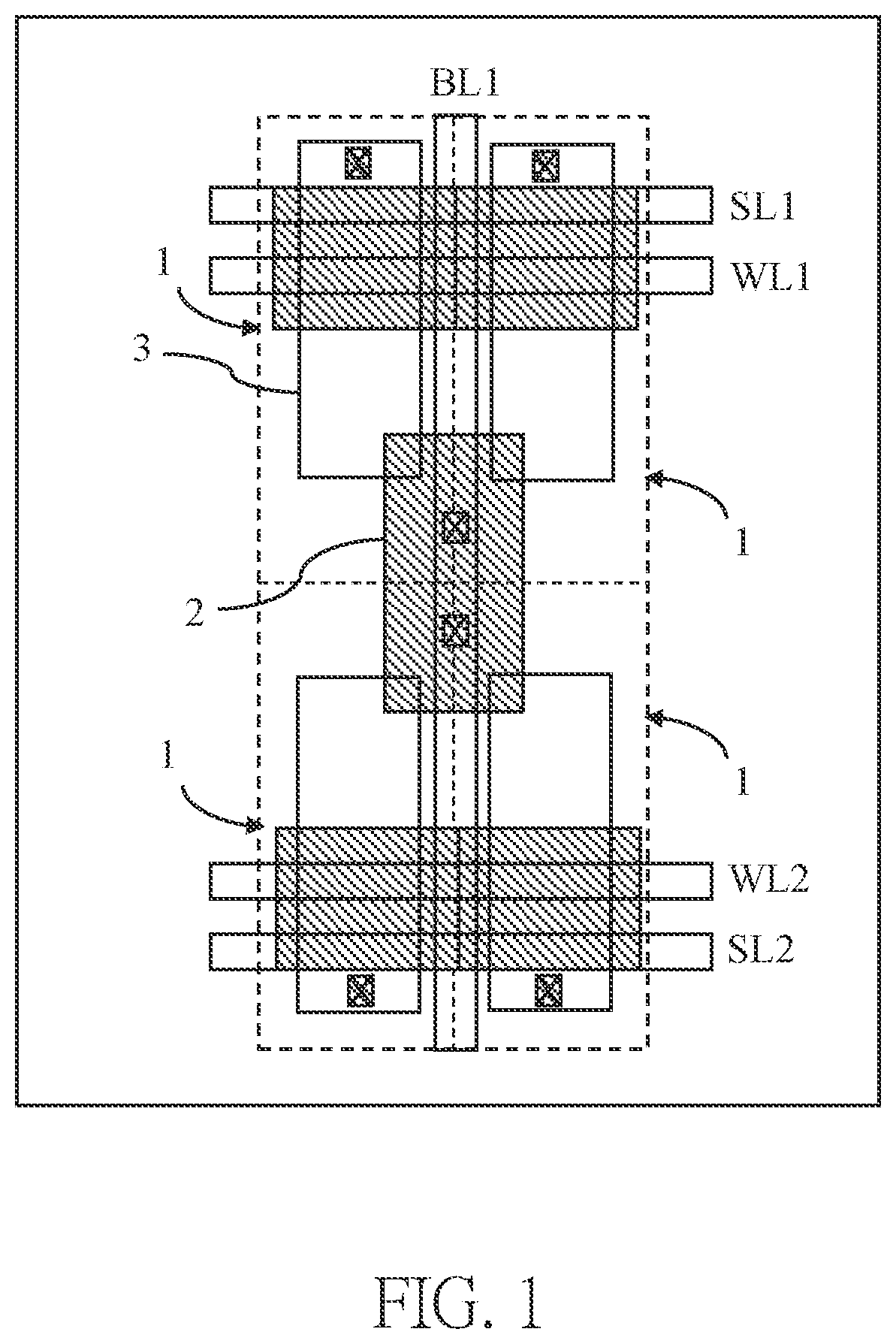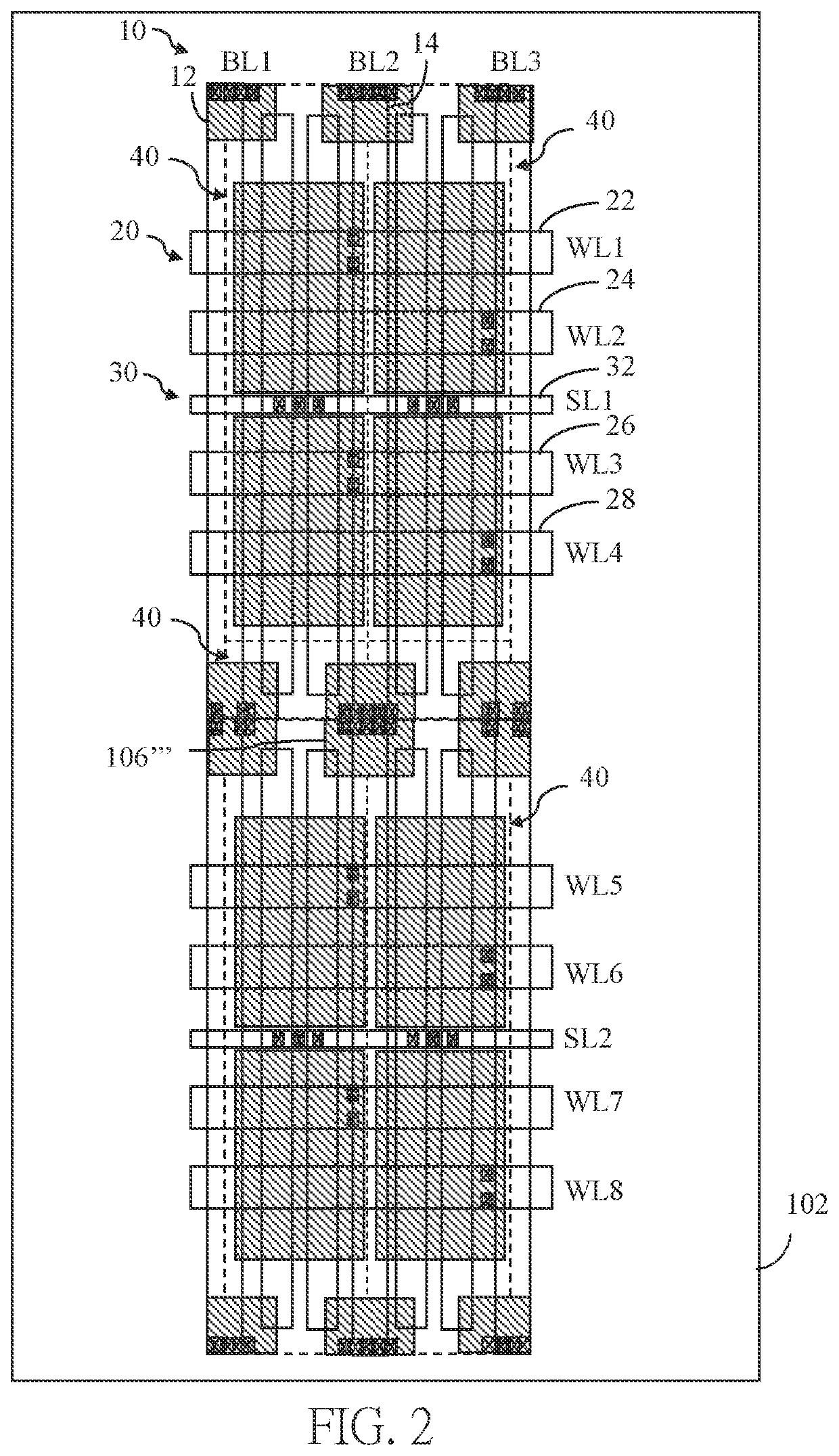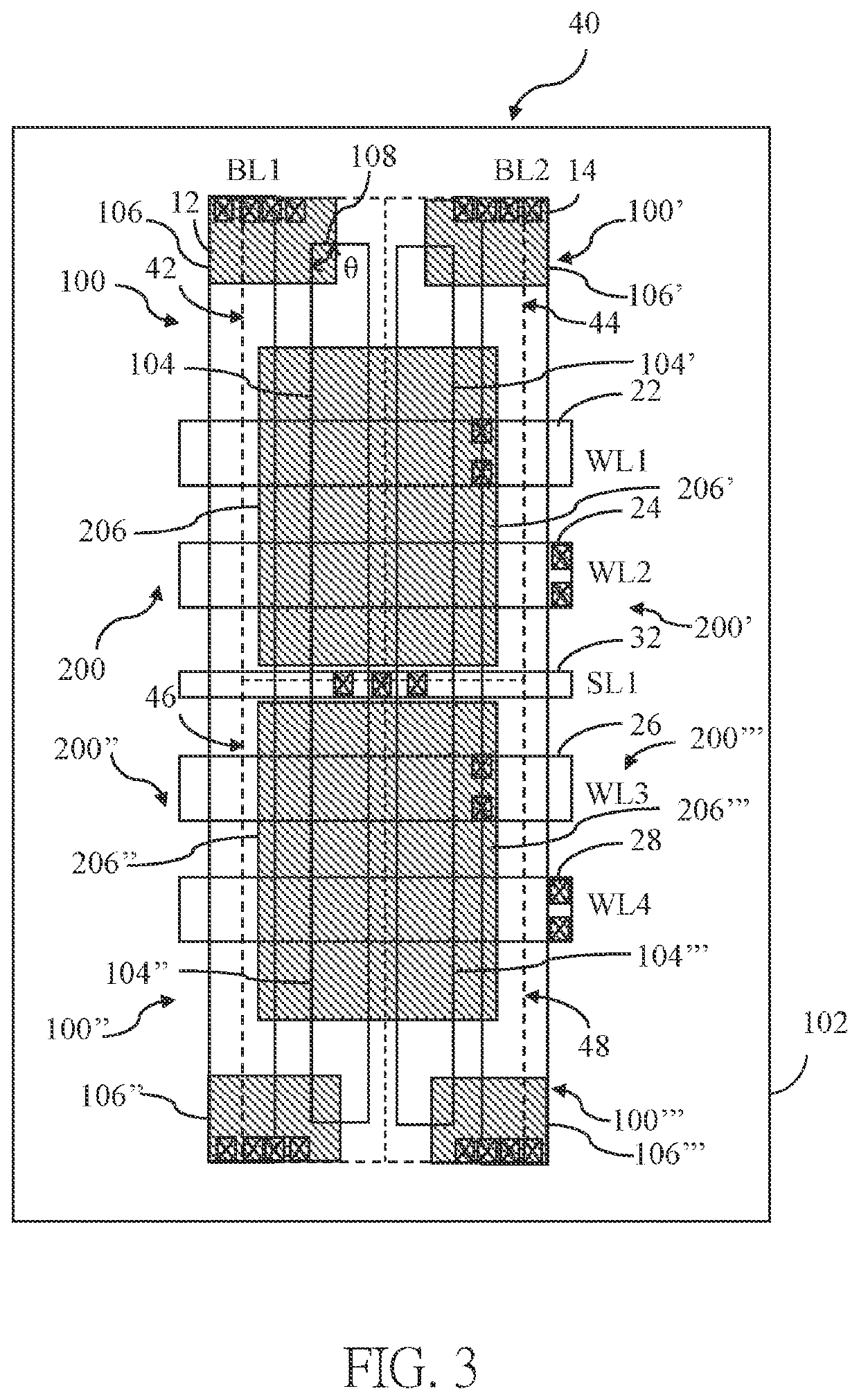Low-cost and low-voltage Anti-fuse array
a low-cost, anti-fuse technology, applied in the direction of semiconductor devices, semiconductor/solid-state device details, instruments, etc., can solve the problems of increasing the cost, requiring the application of voltage large enough to puncture through the gate dielectric layer, and requiring leakage current to flow to the anti-fuse memory cell through the unselected bit-line bl, so as to reduce the cell area, reduce costs, and stabilize the source structure
- Summary
- Abstract
- Description
- Claims
- Application Information
AI Technical Summary
Benefits of technology
Problems solved by technology
Method used
Image
Examples
Embodiment Construction
[0013]Please refer to FIG. 2. The low-cost and low-voltage anti-fuse array provided by the embodiment of the present invention comprises a plurality of parallel bit-lines 10. The bit-lines 10 comprises the bit-lines BL1-BL3, wherein the bit-line BL1 is further defined as the first bit-line 12, and the bit-line BL2 is further defined as the second bit-line 14. There is also a plurality of parallel word-lines 20 perpendicular to the bit-line 10, including the word-lines WL1-WL8, wherein the word-lines WL1, WL2, WL3 and WL4 are defined as the first word-line 22, second word-line 24, third word-line 26 and fourth word-line 28, respectively. There are a plurality of parallel selection-lines 30 parallel to the word-line 20, including the selection-lines SL1 and SL2, wherein the selection-line SL1 is further defined as the first selection-line 32. The above bit-line 10, word-line 20 and selection-line 30 are connected to a plurality of sub-memory array 40. As shown in the figure, four sub-...
PUM
 Login to View More
Login to View More Abstract
Description
Claims
Application Information
 Login to View More
Login to View More - R&D
- Intellectual Property
- Life Sciences
- Materials
- Tech Scout
- Unparalleled Data Quality
- Higher Quality Content
- 60% Fewer Hallucinations
Browse by: Latest US Patents, China's latest patents, Technical Efficacy Thesaurus, Application Domain, Technology Topic, Popular Technical Reports.
© 2025 PatSnap. All rights reserved.Legal|Privacy policy|Modern Slavery Act Transparency Statement|Sitemap|About US| Contact US: help@patsnap.com



